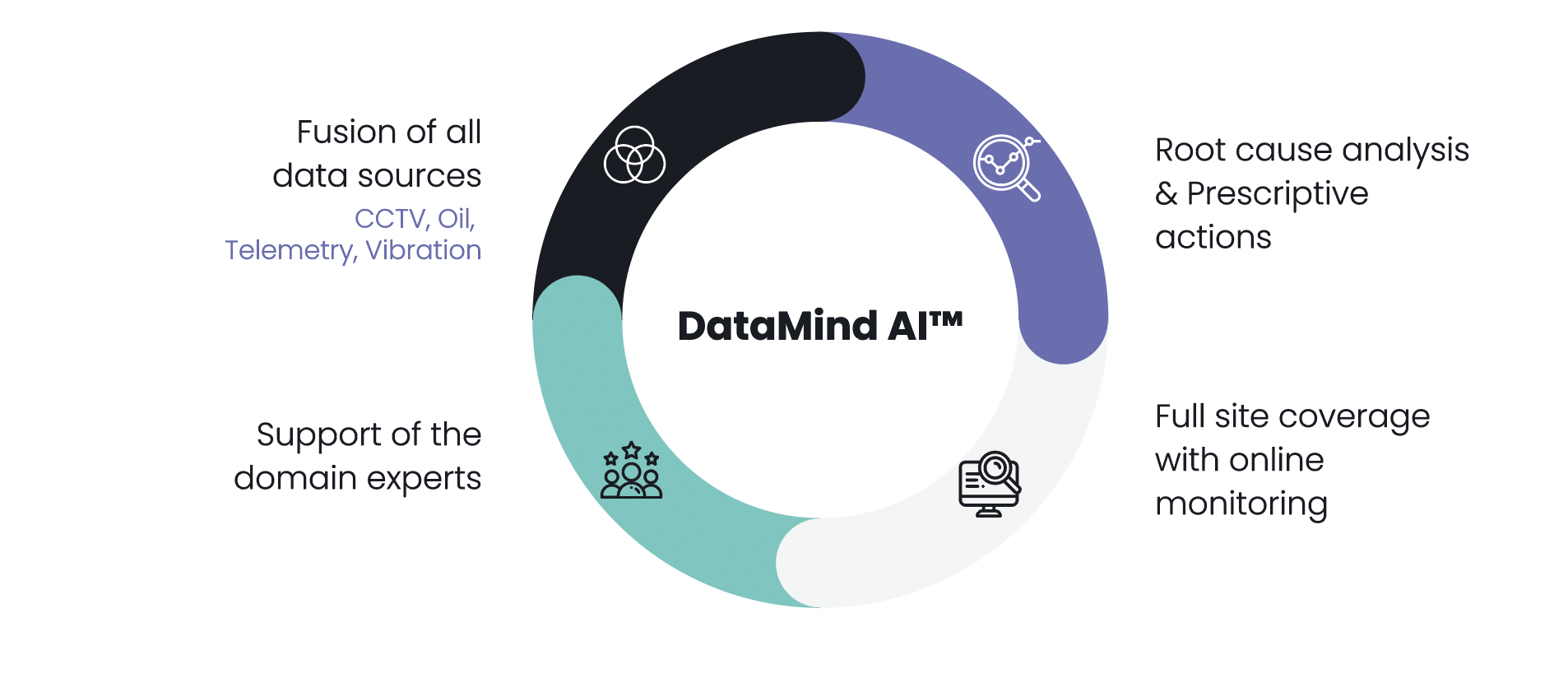
January 18, 2023
Although the potential is immense, studies show that most Predictive Maintenance programs fail to drive real value for mining companies.
In this blog, I will discuss three common myths about predictive maintenance and how mining companies can leverage AI sensor fusion to transform their predictive maintenance programs into value drivers.
Myth 1. The data collected by the mining companies can be easily used for Predictive Maintenance
Myth 2. Models that predict failures give (enough) value.
Myth 3. Deploying sensors is enough for Predictive Maintenance.
In Part 1 and Part 2 of this blog series, I have shared my view on the Top 2 most common misconceptions about Predictive Maintenance in the Mining industry – 1. The Big Data can be easily leveraged for Predictive Maintenance, and 2. Models that predict failures provide value.
We have seen that the collected data doesn’t come from the right sources and is inefficient in running proper root cause analysis that can prevent unplanned shutdowns or recurring failures and that AI models that predict failures might not be able to pinpoint the exact root cause of the malfunctions, perpetuating the loop of unplanned shutdowns. Today, I will discuss the third most common myth.
Myth 3. Deploying sensors is enough for Predictive Maintenance.
We can’t stress the importance of sensors in the mining industry enough. Sensors play a central role in the mining sites’ day-to-day operations. Just like with data and models, the operational needs for sensors can be complex.
Not all sensors are created equal. Sensors can be divided into two categories.
Type 1.Sensors that output raw data like vibration, temperature, torque, etc.
By deploying these sensors, the mining companies commit to allocating significant resources. A great deal of time and expertise will be required of data science teams to analyze the collected metrics and pinpoint the failures. Now imagine the amount of human power needed to perform this analysis for all the machines on the site – it could be an impossible task.
Type 2. Sensors that come with a built-in analytics layer that analyzes the raw data and processes it on some level.
The problem is that this analytics is specific to a certain type of sensor, and is not enough.
Let’s look at an example of an engine of the reclaimer in which bearing wear was discovered. Potentially, there could be several root causes causing this failure. How can we identify the root of the failure and take the appropriate maintenance action? It could be an overload – a very common problem in mining equipment, caused by the stones passing through the reclaimer walls. To rule out this cause, we need to look at the vibration metrics, motor temperature measurements, and the current. We require data from several sensors to rule out the overload.
If we think that the root cause is oil contamination, we need to check vibration and oil analysis. To rule out the imbalance of the conveyor belt, we need additional indicators, such as belt centering, which can be obtained via photography. In this case, weightometer can indicate how many tons of material per hour pass through this belt.
And finally, for lubrication, we need to check whether lubrication alerts were triggered and what was the density and secretions of the lubricant. We need to process the variety of data together to rule out irrelevant root causes and uncover what is causing this failure.
If, after looking at all data sources, we see that the lubrication issues cause the failure, we understand that the automatic lubrication system (ALS) not completing its cycle. The maintenance teams, in addition to replacing the bearing, know that they also need to check the ALS system and make sure that the equipment is being lubricated properly.
Multi-sensor fusion is required to run effective Predictive Maintenance programs
One thing is clear, whether the sensor only provides raw data, or comes with a built-in analytics layer, it is still not enough for running an effective predictive maintenance program. We need to look at the variety of sensors together. Just like doctors order various tests to make a diagnosis and prescribe a treatment for their patient, when it comes to mining equipment, we need to analyze data from all available sources to determine the root cause of the failure and the maintenance actions needed to fix it.
Sensor fusion - the Razor Labs approach.
This is how the DataMind AI approach works when correctly performing predictive maintenance and condition monitoring.
First, it is mandatory to perform a fusion of all types of relevant information, not only collecting big data but analysis of all the information that field maintenance experts use to perform condition monitoring – vibration, oi analysis, CCTV, and telemetry. This fusion can not only predict when the failures occur but indicate the exact root cause and prescriptive actions required to ensure that the failure doesn’t happen again.
Second, it is required to ensure the coverage of the entire site’s critical equipment not to miss a single malfunction and ensure ongoing monitoring and identification of all the malfunctions.
Lastly, the involvement of domain experts is required to launch the correct maintenance processes and to ask the relevant questions about malfunctions indicated by the models.
Illustration 1. DataMind AI – All-in-One Predictive Monitoring Solution
In this blog series, we have examined the Three Most Common Myths about the future of Predictive Maintenance in the Mining Industry. We believe in its relevance for all asset-intensive industries. It is not enough to collect data, generate AI models and deploy sensors. To run effective Predictive Maintenance programs, the companies must apply the sensor fusion approach, strive for full online coverage of the machinery, and involve the existing field maintenance experts to utilize the insights most efficiently.
